Preparation Technology and Experimental Study of Fast-Hardening UHPC Repair Material
Abstract
:1. Introduction
2. Experiment
2.1. Experimental Materials
2.2. Mix Ratio Design
2.3. Experimental Method
2.3.1. Setting Time Test
2.3.2. Fluidity Test
2.3.3. Flexural and Compressive Strength Tests
2.3.4. Microstructure Analysis
3. Experimental Results and Analysis
3.1. Influence of Mechanical Properties of Fast-Hardening UHPC
3.2. Effect of Steel Fibers on Microstructure of Fast-Hardening UHPC
3.3. Effect of Early Strength Agent on Performance of Fast-Hardening UHPC
3.4. Effect of Early Strength Agent on Microstructure of Fast-Hardening UHPC
3.5. Fast-Hardening UHPC Performance Verification Results
Analysis of Working and Mechanical Properties
4. Conclusions
Author Contributions
Funding
Data Availability Statement
Conflicts of Interest
References
- He, S. Existing problems and countermeasures of modern concrete. Yunnan Hydropower 2022, 38, 96–99. [Google Scholar]
- Peng, C. Research status and prospect of new concrete pavement repair materials. J. Guangzhou Univ. 2001, 15, 33–35. [Google Scholar]
- Zhou, F. Research and Performance Evaluation of Physicochemical Coupling Fast Setting Fast Hardening Ultra-High Performance Concrete. Master’s Thesis, Wuhan University of Technology, Wuhan, China, 2021. [Google Scholar]
- JGJ 70-2009; Test Method for Basic Properties of Building Mortar. China Building Industry Press: Beijing, China, 2009.
- GB/T2419-2005; Method for Determination of Fluidity of Cement Mortar. Standards Press of China: Beijing, China, 2005.
- GB/T17671-2021; Test Method for Strength of Cement Mortar. Standards Press of China: Beijing, China, 2021.
- Tang, M. Improving durability of major concrete projects. Chem. Ind. China 1996, 3, 34–37. [Google Scholar]
- Lu, J. Study on the effect of steel fiber content on mechanical properties of UHPC. Guangdong Build. Mater. 2024, 40, 19–22. [Google Scholar]
- Gao, P.; Wu, S.; Lin, P.; Wu, Z.; Tang, M. Morphology analysis of hydration products of magnesium oxide under different curing conditions. Chin. J. Inorg. Chem. 2007, 6, 1063–1068. [Google Scholar]
- Deng, M. Causes and preventive measures of cracks in road and bridge construction. Build. Technol. Dev. 2021, 48, 119–121. [Google Scholar]
- Li, W.; Sun, J.; Chen, S. Study on mechanism of super early strength repairing cement concrete. Highw. Transp. Sci. Technol. 2004, 6, 31–34. [Google Scholar]

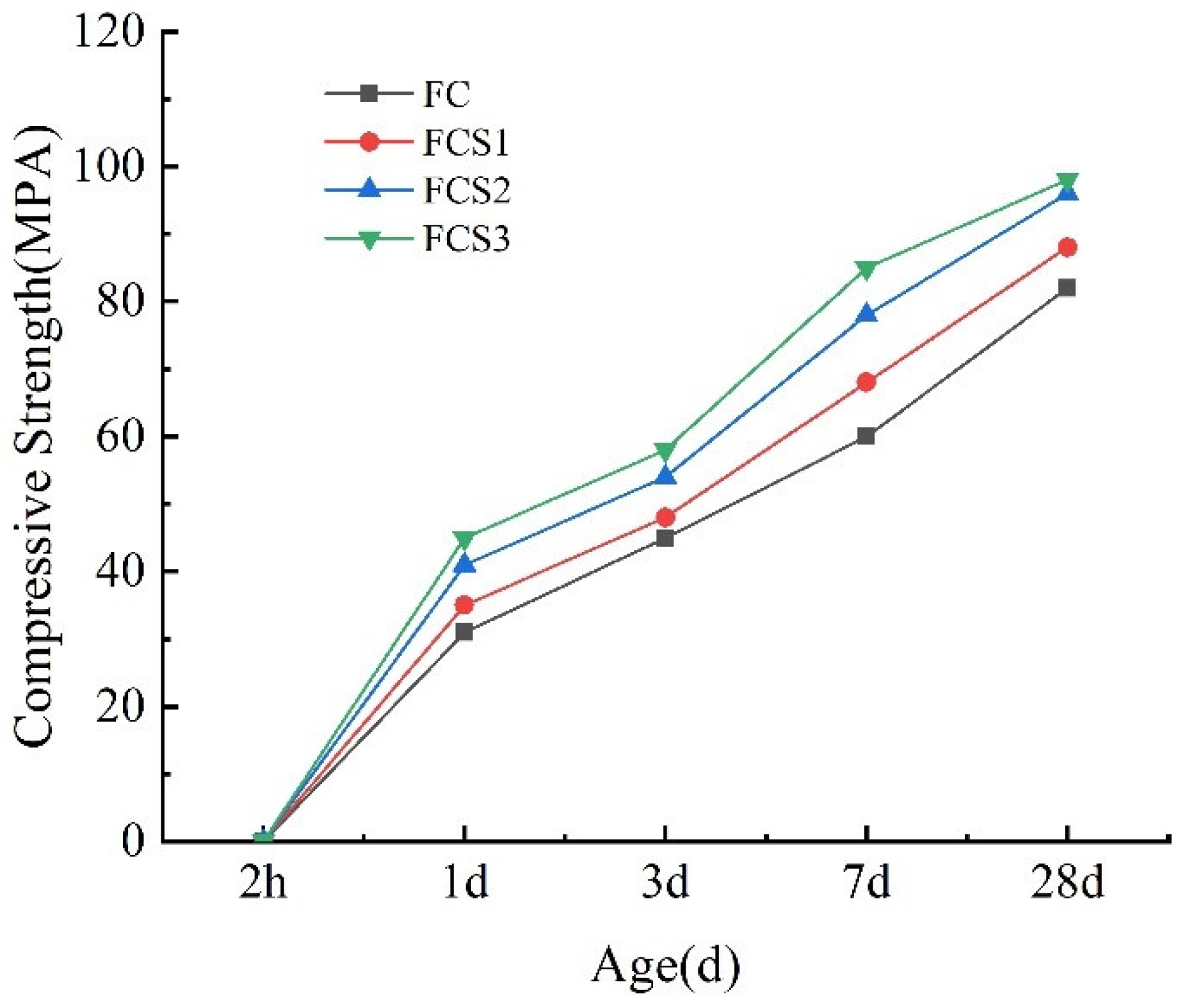
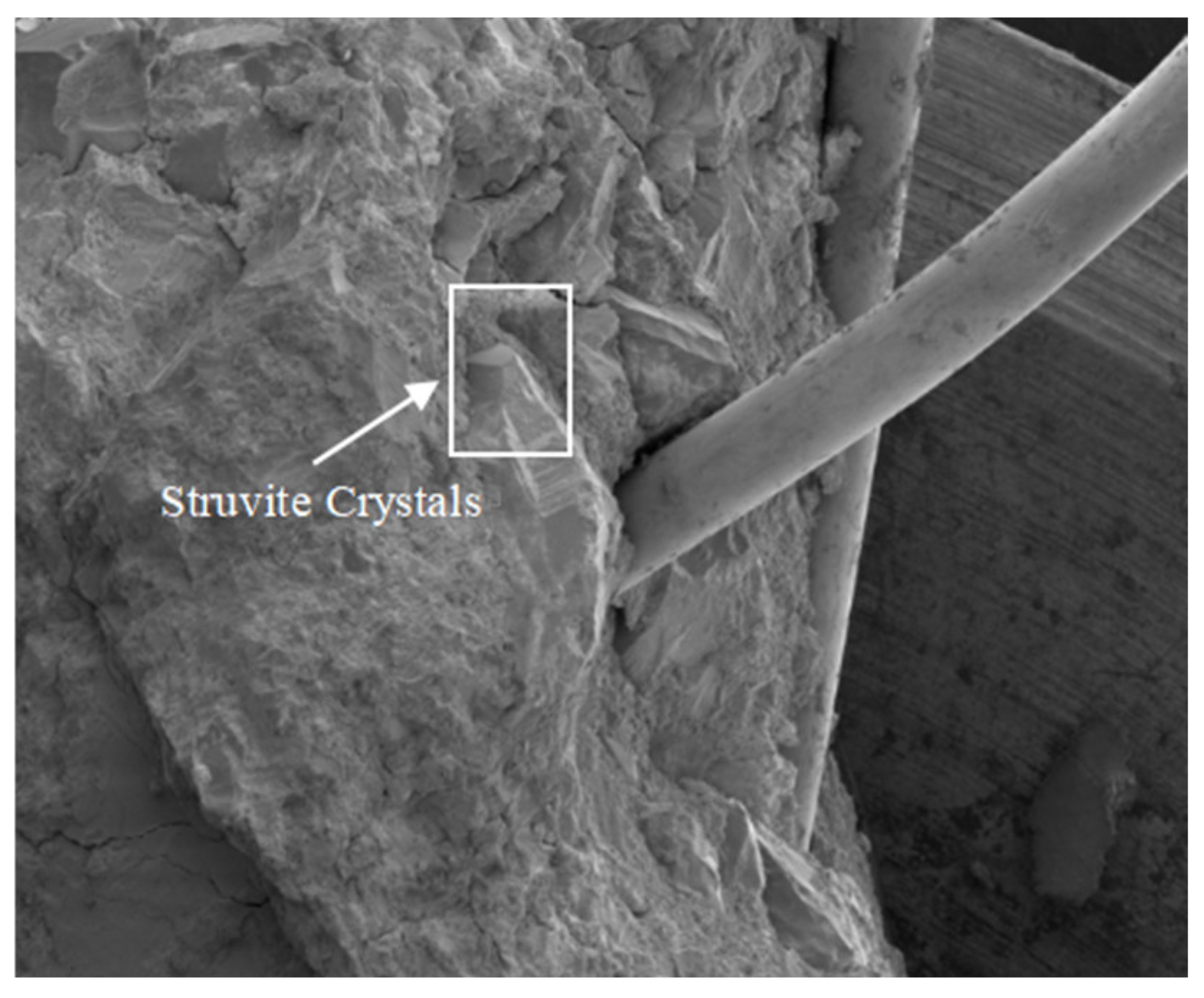



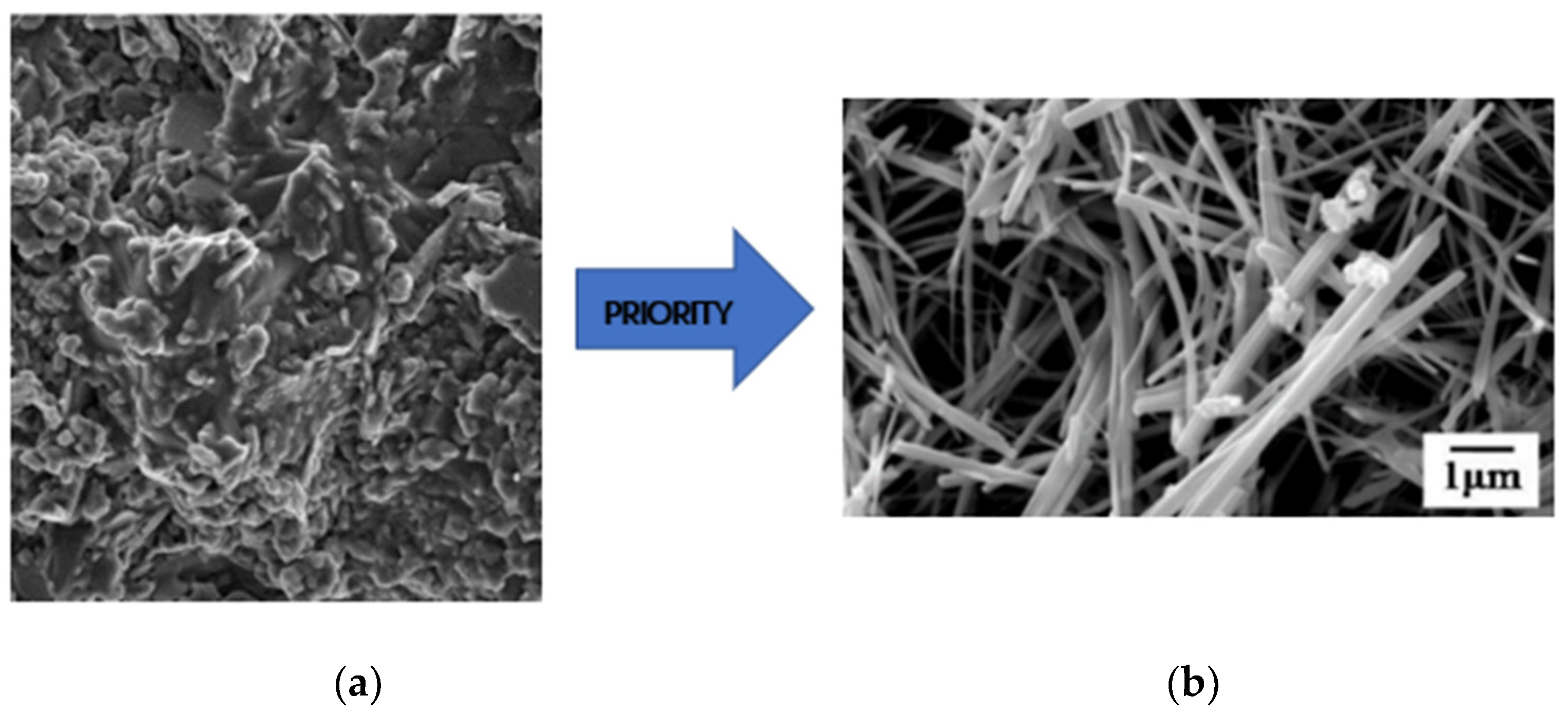
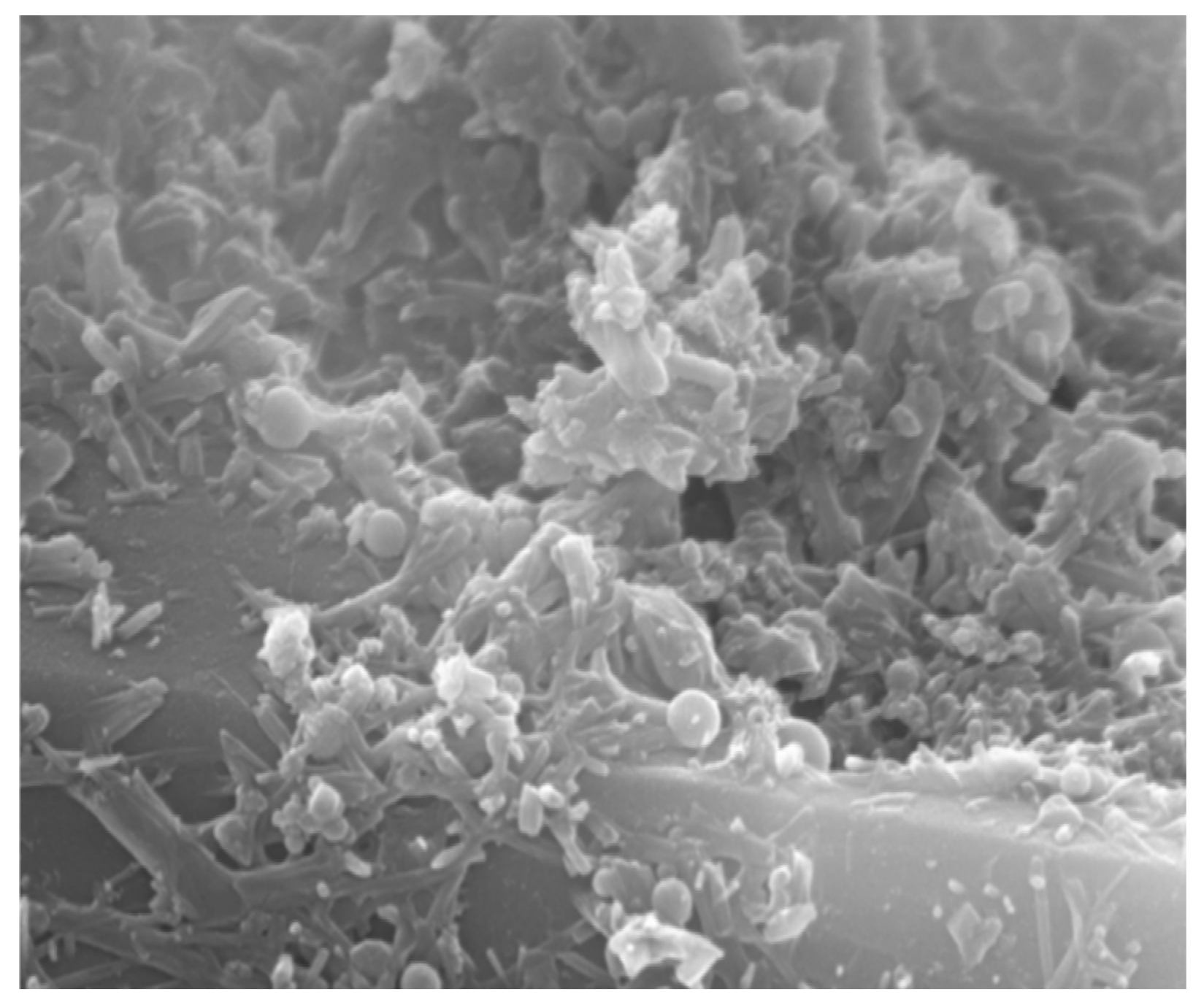



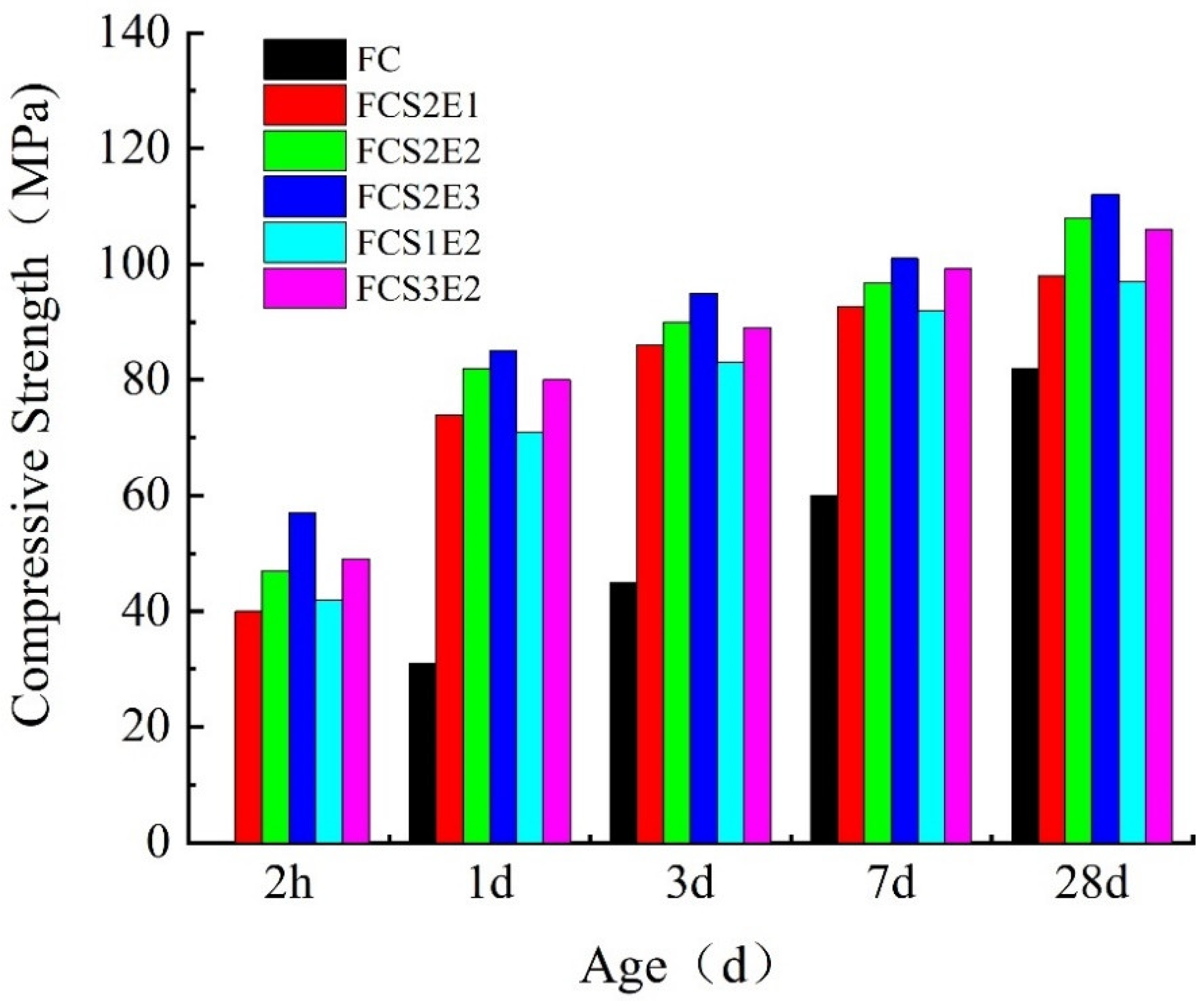



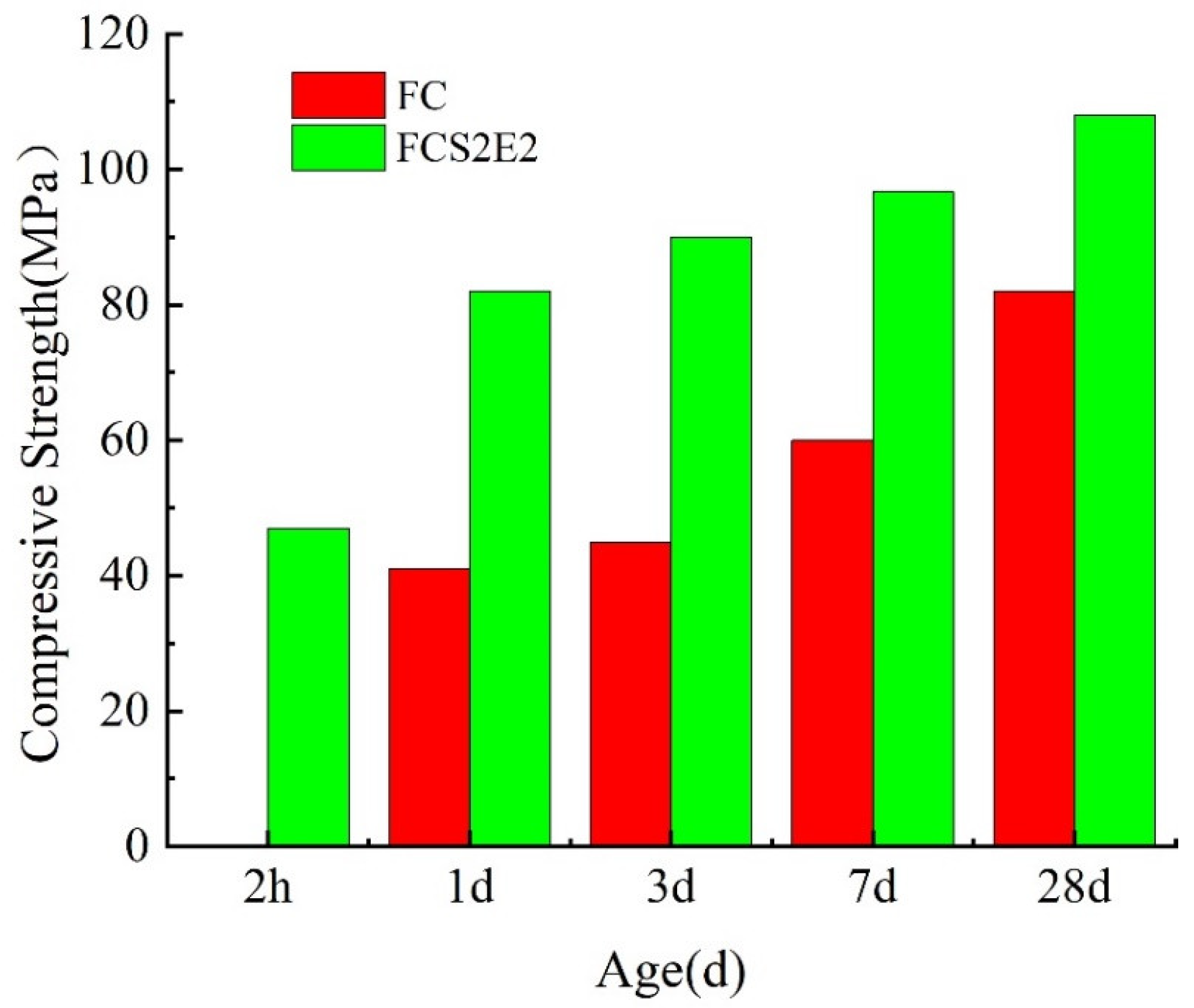
| Specific Surface Area (m2/kg) | Water Consumption (%) | Setting Time (min) | Flexural Strength (MPa) | Compressive Strength (MPa) | |||
|---|---|---|---|---|---|---|---|
| Initial Set | Final Set | 3 Days | 28 Days | 3 Days | 28 Days | ||
| 405 | 26.7 | 130 | 172 | 5.5 | 8.7 | 31.2 | 66.5 |
| Technical Index | Firing Loss (%) | Vitreous Content (%) | Specific Surface Area (m2/kg) | Density (g/cm3) |
|---|---|---|---|---|
| Content (%) | 0.8 | 99 | 440 | 2.8 |
| Specific Surface Area (m2/g) | SiO2 Content (%) | Water Demand Ratio (%) | 7 Days Activity Index (%) |
|---|---|---|---|
| 22 | 95 | 122 | 115 |
| Chemical Composition | CaO | SO3 | Al2O3 |
|---|---|---|---|
| Content (%) | 40.9 | 28.1 | 20.5 |
| Mix | P·O52.5 | S95MP | PFA | SF | Quartz Sand 1 | Quartz Sand 2 | PRIORITY | 540P | SX-02 | HN-01 | Fiber |
|---|---|---|---|---|---|---|---|---|---|---|---|
| FC | 940 | 238 | 53 | 78 | 590 | 885 | 0 | 8.8 | 1.2 | 0 | 0 |
| FCS1 | 940 | 238 | 53 | 78 | 590 | 885 | 0 | 8.8 | 1.2 | 0 | 56 |
| FCS2 | 940 | 238 | 53 | 78 | 590 | 885 | 0 | 8.8 | 1.2 | 0 | 112 |
| FCS3 | 940 | 238 | 53 | 78 | 590 | 885 | 0 | 8.8 | 1.2 | 0 | 168 |
| FCE1 | 772.8 | 238 | 53 | 78 | 590 | 885 | 168 | 8.8 | 1.2 | 2.4 | 0 |
| FCE2 | 716.8 | 238 | 53 | 78 | 590 | 885 | 224 | 8.8 | 1.2 | 2.4 | 0 |
| FCE3 | 660.8 | 238 | 53 | 78 | 590 | 885 | 280 | 8.8 | 1.2 | 2.4 | 0 |
| FCS2E1 | 772.8 | 238 | 53 | 78 | 590 | 885 | 168 | 8.8 | 1.2 | 2.4 | 112 |
| FCS2E2 | 716.8 | 238 | 53 | 78 | 590 | 885 | 224 | 8.8 | 1.2 | 2.4 | 112 |
| FCS2E3 | 660.8 | 238 | 53 | 78 | 590 | 885 | 280 | 8.8 | 1.2 | 2.4 | 112 |
| FCS1E2 | 716.8 | 238 | 53 | 78 | 590 | 885 | 224 | 8.8 | 1.2 | 2.4 | 56 |
| Group Number | Setting Time (min) | Fluidity (mm) | 1-Day Intensity (MPa) | 7-Day Intensity (MPa) | |||
|---|---|---|---|---|---|---|---|
| Initial Fluidity | 30 min | Flexural Strength | Compressive Strength | Flexural Strength | Compressive Strength | ||
| FC | >60 min | 320/330 | 310/320 | 3.6 | 31 | 11 | 60 |
| FCS1 | >60 min | 300/310 | 290/300 | 4.1 | 35 | 12 | 68 |
| FCS2 | >60 min | 290/300 | 280/290 | 4.4 | 41 | 13 | 78 |
| FCS3 | >60 min | 280/290 | 260/270 | 5.3 | 45 | 15 | 85 |
| Group Number | Setting Time (min) | Fluidity (mm) | Intensity (MPa) | Intensity (MPa) | |||
|---|---|---|---|---|---|---|---|
| Initial Fluidity | 30 min | Flexural Strength | Compressive Strength | Flexural Strength | Compressive Strength | ||
| FC | >60 min | 320/330 | 310/320 | 3.6 (1 day) | 31 (1 day) | 11 (7 days) | 60 (7 days) |
| FCE1 | 48 min | 310/280 | 300/290 | 2.6 (2 h) | 27 (2 h) | 7 (1 day) | 54 (1 day) |
| FCE2 | 39 min | 300/280 | 280/270 | 4.2 (2 h) | 35 (2 h) | 8 (1 day) | 63 (1 day) |
| FCE3 | 26 min | 280/260 | 0 | 4.5 (2 h) | 38 (2 h) | 10 (1 day) | 68 (1 day) |
| Group Number | Setting Time (min) | Fluidity (mm) | 2 h Intensity (MPa) | 1-Day Intensity (MPa) | |||
|---|---|---|---|---|---|---|---|
| Initial Fluidity | 30 min | Flexural Strength | Compressive Strength | Flexural Strength | Compressive Strength | ||
| FCS2E1 | 42 min | 300/310 | 310/320 | 8 | 40 | 10.7 | 74 |
| FCS2E2 | 35 min | 290/300 | 280/290 | 12 | 47 | 14.8 | 82 |
| FCS1E2 | 37 min | 300/310 | 280/290 | 9 | 42 | 11 | 71 |
| FCS3E2 | 30 min | 280/290 | 260/270 | 10.6 | 49 | 12.7 | 84 |
Disclaimer/Publisher’s Note: The statements, opinions and data contained in all publications are solely those of the individual author(s) and contributor(s) and not of MDPI and/or the editor(s). MDPI and/or the editor(s) disclaim responsibility for any injury to people or property resulting from any ideas, methods, instructions or products referred to in the content. |
© 2024 by the authors. Licensee MDPI, Basel, Switzerland. This article is an open access article distributed under the terms and conditions of the Creative Commons Attribution (CC BY) license (https://creativecommons.org/licenses/by/4.0/).
Share and Cite
Xie, M.; Li, H.; Yuan, B.-T.; Li, M.; Hou, W.-L. Preparation Technology and Experimental Study of Fast-Hardening UHPC Repair Material. Buildings 2024, 14, 2124. https://doi.org/10.3390/buildings14072124
Xie M, Li H, Yuan B-T, Li M, Hou W-L. Preparation Technology and Experimental Study of Fast-Hardening UHPC Repair Material. Buildings. 2024; 14(7):2124. https://doi.org/10.3390/buildings14072124
Chicago/Turabian StyleXie, Ming, Hao Li, Bing-Tao Yuan, Ming Li, and Wen-Li Hou. 2024. "Preparation Technology and Experimental Study of Fast-Hardening UHPC Repair Material" Buildings 14, no. 7: 2124. https://doi.org/10.3390/buildings14072124




